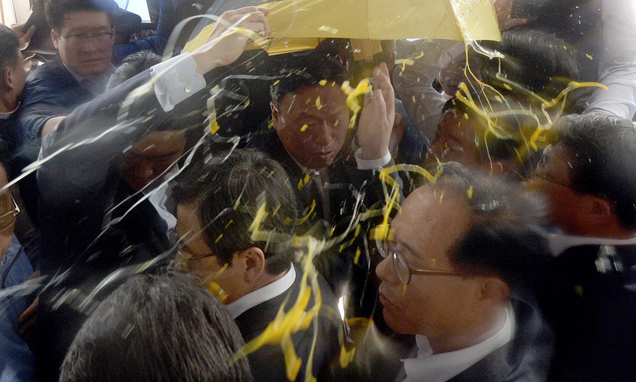North Korea singles out Darwin as the launch pad for nuclear war

AUSTRALIA’S Defence Industry Minister Christopher Pyne has slammed North Korea after its state-run newspaper identified Darwin as the site of a possible nuclear war.
Last week, US marines touched down in the NT capital for a six-month deployment, during which they will conduct military training exercises with Australian and visiting Chinese forces.
Commanding Officer of Marine Rotational Force Darwin, Lieutenant Colonel Brian S. Middleton, said the 1250 US Marine deployment to Darwin stands ready to fight if tensions between his country and North Korea escalate into direct conflict.
But while Lieut. Colonel Middleton said US Marines were ready for battle, Rodong Sinmun, the official paper of the Worker’s Party of North Korea, had its own take on the Darwin arrival, claiming the United States was using Australian territory in preparation of nuclear war.
“This is the largest scale US military presence in Australia after World War 2,” the newspaper reported on Monday under the headline “America prepares for nuclear war in different overseas military deployments”.
“America is fanatically, crazily trying to optimise its nuclear war readiness.”
The Foreign Ministry of the DPRK warned overnight the Turnbull government is “blindly and zealously toeing the US line”.
“It is entirely attributable to the nuclear threat escalated by the US and its anachronistic policy hostile to the DPRK that the situation on the Korean Peninsula is inching close to the brink of war in an evil cycle of increasing tensions.
“If Australia persists in following the US moves to isolate and stifle the DPRK and remains a shock brigade of the US master, this will be a suicidal act of coming within the range of the nuclear strike of the strategic force of the DPRK.”
It comes as Korean Central News Agency claims five million of North Korea’s youth “are hardening their will to wipe out the enemies with the surging rages at them” and were “waiting for the final order”.



